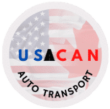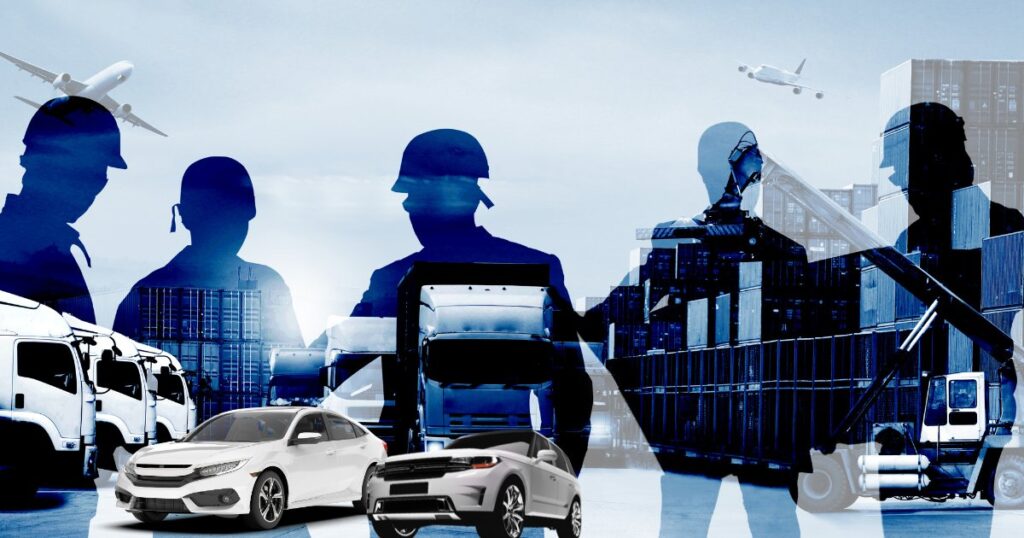How can artificial intelligence revolutionize the way vehicles are shipped across long distances? In a sector as complex and dynamic as auto logistics, every second, mile, and dollar counts. From routing vehicles efficiently to matching carriers with loads, the auto transport industry depends on precise coordination.
Until recently, this was managed by humans, relying on experience, spreadsheets, and old-fashioned phone calls. But with the growing adoption of artificial intelligence (AI), those days are fading fast.
AI is transforming the auto logistics industry. Machine learning and predictive algorithms now power advanced logistics tools. These tools can automatically calculate the most efficient routes and determine real-time pricing. They also match the right carriers with the right loads faster and more accurately than ever.
The Growing Complexity of Auto Logistics
Auto logistics isn’t just about moving cars from Point A to Point B. It involves:
- Coordinating pickups and drop-offs across thousands of locations
- Managing different vehicle types (sedans, trucks, EVs)
- Complying with regional transport regulations
- Dealing with unexpected changes like weather, traffic, or last-minute cancellations
These factors introduce inefficiencies, increase costs, and create a massive logistical puzzle. Traditional systems fall short in responding to these real-time challenges. Enter AI.
What Is AI-Powered Route Optimization?

AI-powered route optimization uses machine learning, GPS data, historical traffic trends, weather updates, and real-time road conditions to determine the most efficient path for a driver. Unlike standard GPS, AI doesn’t just suggest the shortest route—it learns from patterns and adjusts in real time to reduce delivery time, fuel costs, and driver fatigue.
Pro Tip: Some platforms also consider driver preferences (e.g., avoiding steep grades for heavy hauls) and vehicle constraints (e.g., avoiding low bridges for taller trucks), ensuring safety while saving time.
How It Works in Practice
Imagine a car carrier is scheduled to pick up three vehicles in different cities and drop them off in another region. AI can analyze thousands of route combinations and quickly determine the best route based on:
- Distance and fuel cost: AI calculates the most fuel-efficient and cost-effective routes by analyzing mileage, fuel prices, and terrain conditions.
- Traffic congestion: AI anticipates and reroutes around high-traffic zones using live traffic feeds and historical congestion data.
- Road closures or detours: AI evaluates construction schedules and government alerts to reroute drivers around planned or sudden obstructions.
- Weather predictions: Forecast data is factored into routing decisions to help avoid areas prone to storms, heavy rainfall, or snow-related delays.
- Delivery timeframes: Meeting strict delivery windows becomes more manageable as the system prioritizes time-sensitive shipments and adjusts plans accordingly.
What used to take dispatchers hours to plan manually now takes seconds, increasing efficiency and reliability.
AI-Driven Load Matching: A Win-Win for Shippers and Carriers
Load matching is the process of connecting shippers (those with vehicles to transport) with available carriers (those who can move them). Traditional load boards require hours of scrolling and manual outreach. AI automates the matchmaking process using algorithms that consider:
- Carrier location and route
- Capacity and truck type
- Historical performance
- Pricing trends
- Preferred partners
AI doesn’t just find a match—it finds the best possible match based on hundreds of data points. This results in fewer empty miles, higher earnings for carriers, and more reliable service for customers.
Predictive Pricing: Smarter Bids and Instant Quotes
Pricing in the auto transport business is notoriously volatile. Fuel costs, driver availability, seasonal demand, and distance all impact final rates. AI changes the game by introducing predictive pricing—a model that uses historical data and real-time conditions to generate accurate price estimates instantly.
Shippers can use this to provide transparent quotes to customers, while carriers can set more competitive rates without underselling themselves.
Example:
A shipper looking to move a car from Los Angeles to Chicago can input details into an AI-powered platform. In seconds, it delivers a quote that reflects real-time market demand, fuel prices, route complexity, and even pickup flexibility.
Real-World Benefits of AI in Auto Logistics

The practical results of integrating AI are impressive across the board:
- Reduced Operational Costs: By optimizing routes and minimizing empty return trips, businesses can cut fuel and labor expenses.
- Faster Deliveries: Real-time data helps avoid delays due to construction, traffic, or weather.
- Improved Customer Satisfaction: Accurate ETAs and better communication lead to happier customers.
- Fewer Errors: Automation reduces human error in scheduling, dispatching, and pricing.
Overcoming Resistance: The Human Factor
Despite its clear benefits, not everyone in the industry is quick to embrace AI. Many small carriers and brokers still rely on manual methods, fearing technology will replace human jobs. However, the truth is that AI enhances human decision-making, not replaces it.
Pro Tip: For smaller companies, starting with a low-cost AI tool that integrates with existing load boards or dispatch software can provide a smooth transition without major disruptions.
How AI Improves Carrier Utilization and Reduces Deadhead Miles
A common inefficiency in auto transport is “deadhead” miles—when a truck runs empty either to a pickup point or after a delivery. AI can predict where future loads are likely to be and proactively route drivers toward those zones, reducing downtime and maximizing profits.
For example, if a carrier finishes a delivery in Houston, the system might route them toward Dallas in anticipation of a high-volume pickup window the next day. This predictive routing not only saves fuel but also helps fill gaps in scheduling.
The Future of AI in Auto Logistics
The future promises even more advanced tools as AI becomes smarter and more integrated. Emerging innovations include:
- Autonomous vehicle support: Coordinating mixed fleets of human- and AI-driven trucks
- AI-powered contract negotiation: Matching not just loads, but terms, timelines, and compliance rules
- Digital twins: Creating virtual replicas of operations to test route scenarios before real-world deployment
Companies that adopt these tools early will gain a competitive advantage in cost control, speed, and customer satisfaction.
Challenges and Considerations
While the future is promising, it’s not without hurdles:
- Data privacy concerns: AI needs access to large datasets, and managing them securely is a must.
- Integration issues: Older legacy systems may not sync well with modern AI platforms.
- Training staff: Teams must be trained not only to use AI tools but also to trust the insights they provide.
Nonetheless, as AI becomes more user-friendly and affordable, adoption is expected to grow rapidly—especially among mid-sized logistics operations.
Getting Started: How to Embrace AI in Auto Transport
If you’re a broker, dispatcher, or auto hauler ready to explore AI, here’s a simple roadmap:
- Evaluate your current workflow: Where are the bottlenecks?
- Identify an AI-ready platform: Look for software that integrates route optimization, load matching, and predictive pricing.
- Start with one feature: Begin with route optimization or load matching before going all in.
- Measure results: Track improvements in delivery time, costs, and revenue.
- Train your team: Ensure everyone understands the system and its value.
Adopting AI isn’t about replacing jobs—it’s about freeing your team from repetitive tasks so they can focus on growth, relationships, and strategy.
Is Your Auto Logistics Operation Ready for an AI Upgrade?
The question is no longer whether AI will change auto logistics—it already has. The real question is: Will your business ride the wave or be left behind? Embracing AI-powered route optimization and load matching tools can streamline your operations, reduce costs, and deliver a better experience for everyone involved.
Whether you’re managing a large fleet or running a one-truck operation, it’s time to ask: Are you ready to drive efficiency with AI at the wheel?


